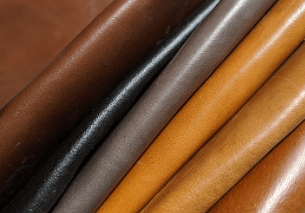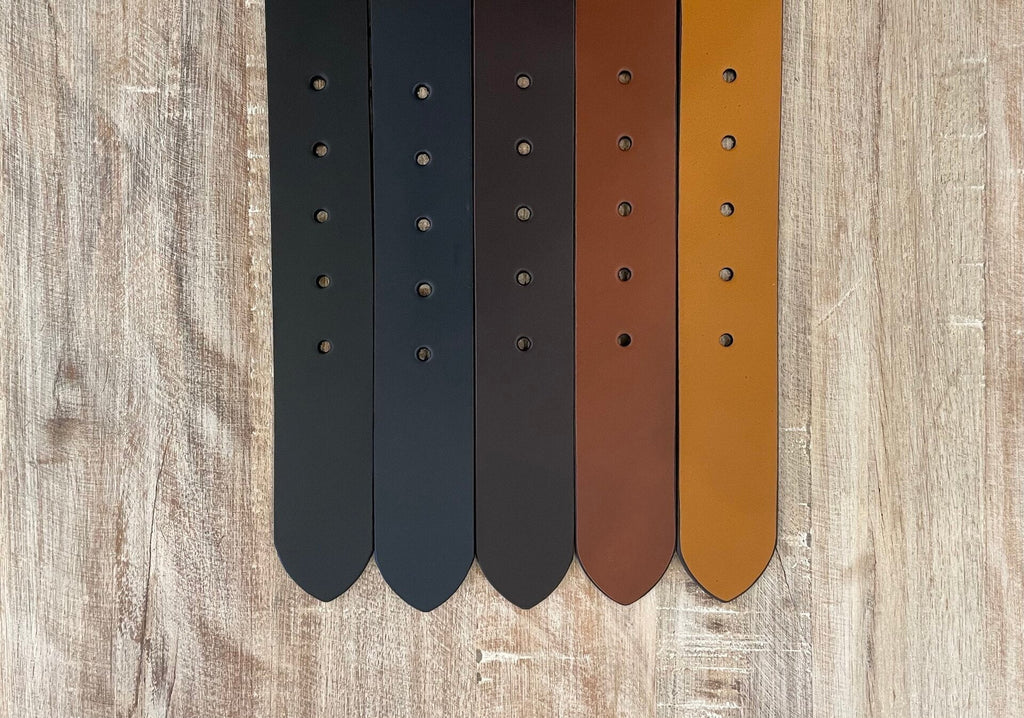
Real Leather vs Faux Leather
Choosing between faux and real leather can be challenging due to each material's distinct advantages. Faux leather, a synthetic alternative, has gained popularity for its affordability and ease of maintenance. On the other hand, real leather, crafted from animal hides, is known for its durability and unique, natural aesthetic.
When it comes to wearable items, such as shoes or coats, there are several benefits of choosing real leather, but faux leather has a few advantages as well.
The Short Answer: What’s the Difference Between Faux Leather and Real Leather?
The key difference between faux leather and real leather is that real leather comes from animal hides, while faux leather (also known as synthetic, imitation, vegan, or PU leather) typically comes from synthetic fibers coated with a plastic polymer or similar material. Real leather is a timeless material with a classic and distinct look, smell, and feel.
What is Real Leather?
Real leather is a natural material made from the hides of animals such as cattle, buffalo, and oxen. The production process involves tanning, which stabilizes the hide and prevents decomposition. There are several types of real leather, including full-grain, top-grain, and genuine leather.
Full-grain leather is the highest quality, retaining the hide's natural surface and imperfections, contributing to its unique appearance and durability. Top-grain leather is lightly sanded to remove imperfections, providing a smoother finish. Genuine leather is made from the lower layers of the hide and is more affordable but less durable.
Real leather is renowned for its strength, breathability, and ability to develop a patina over time, enhancing its aesthetic appeal. Each piece of real leather is unique, featuring natural markings such as scars and stretch marks, which add character and authenticity to the shoes, wallets, bags, and other items it’s used in.
What is Faux Leather?
Faux leather, also known as synthetic leather, is a man-made material designed to mimic the look and feel of real leather. It is typically made from a fabric base coated with plastic, such as polyurethane (PU) or polyvinyl chloride (PVC). The production process involves treating the plastic with dyes, wax, or polyurethane to achieve the desired color and texture. Faux leather offers a consistent, uniform appearance in various colors and finishes. It is often chosen for its affordability and ease of maintenance, as it is resistant to stains and can be cleaned with a simple wipe-down.
Pros and Cons of Real Leather
Real leather is known for its durability and timeless appeal. One of its most significant advantages is its longevity; when properly cared for, real leather can last for decades, developing a beautiful patina that enhances its character over time. Its natural breathability makes it comfortable for furniture and fashion, adjusting well to body temperature.
However, real leather requires maintenance and regular conditioning to prevent drying and cracking. It is also more expensive than faux leather, reflecting its quality and the labor-intensive tanning process. Despite these challenges, real leather's unique texture, scent, and appearance often make it the preferred choice for those seeking luxury and durability in their products.
Pros and Cons of Faux Leather
Faux leather is a popular alternative due to its affordability and versatility. It is significantly cheaper than real leather, making it accessible for a broader range of budgets. Maintenance is straightforward, as faux leather is resistant to stains and can be cleaned easily with a damp cloth. Additionally, it offers a wide variety of unnatural colors and finishes, allowing for more customization in design.
However, faux leather is less durable than real leather and may crack or peel over time, especially with heavy use. It does not develop a patina, and its uniform appearance lacks the unique character of real leather. Environmental concerns also arise, as faux leather is made from plastics like PVC or PU, which can contribute to pollution and are not biodegradable.
Breathability & Comfort
Leather hide is a porous surface. Its natural ability to expel moisture in the form of vapor is a key benefit over synthetic leather--as the pores of the animal’s skin are only present on real leather. This plays a unique and important role in regards to shoes, as it enhances comfort and breathability vs synthetic leather. Since products that imitate leather are made from synthetic materials, they do not breathe as much as real leather. For example, if you choose shoes that are made from faux leather, your shoes cannot breathe. Your feet will likely sweat more. They may itch as well, and the shoes can develop an odor that is hard to eliminate. Leather allows air in to reduce sweating, discomfort, and odors.
Durability
Real leather is going to have great durability over time because, as a natural product, it won’t crack or peel. Synthetic leather tends to tear and puncture more easily. If you correctly store leather shoes or a leather bag and maintain them, they will stay durable. Leather shoes also tend to have better overall craftsmanship for the non-leather parts of the shoe, such as the heel or heel cap. Synthetic materials wear out faster, and many cannot be restored when damaged. Scuffs and scratches on leather can usually be polished away with the right leather shoe care products.
Better For The Environment
Synthetic leather is more environmentally wasteful compared to real leather, as real leather is a by-product of animal hides being processed for their meat. And being a natural by-product, the processing steps for creating the leather, when using eco-conscious tanners, do not yield as many environmental toxins or waste as plastic. When you add the durability of leather that is cared for properly, the result is that you are less likely to buy as many leather goods over time when you choose real leather products. Leather shoes can be repaired and renewed in many cases. Leather that is cared for properly can last for years to come.
Appearance & Cost
When it comes to comfort, real leather is the winner in the faux leather vs real leather battle. Leather's breathability and its ability to stretch are two factors that contribute to its comfort. Faux leather is not nearly as flexible. When it comes to shoes, the stretchability of leather makes it an excellent choice for allowing your feet to keep their natural position without pinching your toes. Tight shoes can negatively affect circulation, which can contribute to more serious podiatric problems.
Final Thoughts on Faux Leather and Real Leather
When choosing between real and faux leather, consider budget, maintenance, durability, and ethical values. Real leather offers unparalleled durability and a unique aesthetic, while faux leather provides affordability and ease of care. Ultimately, the best choice depends on your personal preferences and priorities.
- Choosing a selection results in a full page refresh.
- Press the space key then arrow keys to make a selection.





